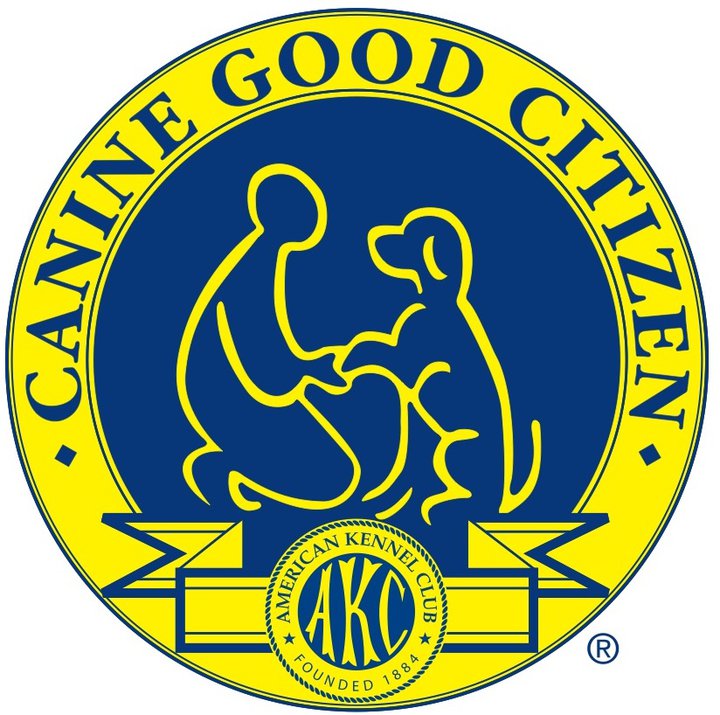Canine Good Citizen
Responsible Owners, Well-Mannered Dogs
 The AKC’s Canine Good Citizen program is recognized as the gold standard for dog behavior. In CGC, dogs who pass the 10 step CGC test can earn a certificate and/or the official AKC CGC title. Dogs with the CGC title have the suffix, “CGC” after their names.
The AKC’s Canine Good Citizen program is recognized as the gold standard for dog behavior. In CGC, dogs who pass the 10 step CGC test can earn a certificate and/or the official AKC CGC title. Dogs with the CGC title have the suffix, “CGC” after their names.
We will spend 5 weeks working on the 9 required exercises. The final week will be a CGC exam for each student.
Click for current schedule
- Sitting Politely for Petting
The dog will allow a friendly stranger to pet it while it is out with its handler. - Appearance and Grooming
The dog will permit someone to check it’s ears and front feet, as a groomer or veterinarian would do. - Out for a Walk (walking on a loose lead)
Following the evaluator’s instructions, the dog will walk on a loose lead (with the handler/owner). - Walking Through a Crowd
This test demonstrates that the dog can move about politely in pedestrian traffic and is under control in public places. The dog and handler walk around and pass close to several people (at least three). - Sit and Down on Command and Staying in Place
The dog must do sit AND down on command, then the owner chooses the position for leaving the dog in the stay. -
Coming When Called
This test demonstrates that the dog will come when called by the handler (from 10 feet on a leash). -
Reaction to Another Dog
This test demonstrates that the dog can behave politely around other dogs. Two handlers and their dogs approach each other from a distance of about 20 feet, stop, shake hands and exchange pleasantries. -
Reaction to Distraction
The evaluator will select and present two distractions such as dropping a chair, etc -
Supervised Separation
This test demonstrates that a dog can be left with a trusted person, if necessary, and will maintain training and good manners. Evaluators are encouraged to say something like, “Would you like me to watch your dog?” and then take hold of the dog’s leash. The owner will go out of sight for three minutes. The dog does not have to stay in position but should not continually bark, whine, or pace unnecessarily, or show anything stronger than mild agitation or nervousness. Evaluators may talk to the dog but should not engage in excessive talking, petting, or management attempts (e.g, “there, there, it’s alright”).